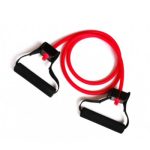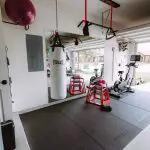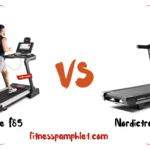Discover simple and effective fitness challenges for work: get moving in 10 minutes and improve your focus without leaving your desk.
How Short Fitness Challenges Can Improve Your Productivity
In today’s fast-paced, high-demand work environment, maintaining productivity can sometimes feel like an uphill battle. Employees are expected to juggle multiple tasks while staying focused and sharp throughout the day. Amidst the constant flow of emails, meetings, and deadlines, it can be difficult to sustain peak productivity. Yet, research and real-world applications are beginning to show that one surprising solution exists right under our noses—fitness challenges. Specifically, short, targeted fitness challenges have been proven to be incredibly effective in boosting workplace productivity. By incorporating these short bursts of exercise into daily routines, individuals and teams can see significant improvements in focus, energy levels, creativity, and overall performance.
The Science Behind Exercise and Productivity

It’s not just a casual claim that exercise improves focus and productivity—it’s grounded in science. Exercise increases the blood flow to the brain, which, in turn, enhances cognitive functions such as memory, concentration, and mental clarity. When we engage in physical activity, our body releases endorphins, which are neurochemicals that help reduce stress and elevate mood. This shift in mood and energy is crucial in maintaining high levels of productivity throughout the workday.
Moreover, short bursts of exercise, such as a 5-10 minute workout, can trigger what’s known as an “afterburn” effect, in which the body continues to burn calories at an elevated rate even after the activity has ended. This elevated metabolic rate not only benefits physical health but also increases mental alertness, making it easier for individuals to focus on tasks once they return to their work.
Increased Focus and Mental Clarity
When we work for long stretches without physical movement, it’s common to experience a mental fog or loss of concentration. This is due to prolonged periods of inactivity, which can lead to the build-up of stress hormones and a decrease in blood circulation. In contrast, short fitness challenges have the power to reset the mind. Engaging in a quick walk, a series of stretches, or a short round of jumping jacks, can clear the mental clutter, allowing you to return to work with fresh perspective and sharpened focus.
These challenges don’t need to take long. A mere ten-minute workout can provide a necessary mental break from tasks, allowing the brain to recharge before tackling the next item on your to-do list. Studies show that employees who engage in these quick bursts of activity are better able to maintain their focus and cognitive abilities for longer periods of time, which can directly contribute to higher quality work and faster completion of tasks.
Enhanced Energy Levels
A major culprit in the depletion of energy during work hours is the sedentary nature of many jobs. Sitting for long periods causes the body to become sluggish, leading to a drop in energy levels. This is especially evident during the afternoon slump, a common phenomenon where productivity levels plummet, and employees struggle to stay awake or engaged.
Short fitness challenges, especially those that involve aerobic activity, are an antidote to this midday lull. Exercise helps to circulate oxygen throughout the body, invigorating both muscles and the mind. By implementing a quick, energizing workout, employees can counteract the fatigue that often builds up over hours of sitting. Whether it’s a set of bodyweight exercises, yoga stretches, or a brisk walk around the office, the resulting energy boost can last long enough to keep you productive for the rest of the day.
Stress Reduction for Improved Performance

Stress is an inevitable part of modern work life, but how we manage it can have a profound effect on our ability to perform. Chronic stress can lead to burnout, decreased motivation, and poor decision-making. Fortunately, physical activity is one of the most effective ways to combat stress. Short fitness challenges, when done regularly, provide the body with an outlet to release pent-up tension, both physically and mentally.
Whether it’s a quick series of stretching exercises to relieve muscle tension or a rapid round of high-intensity interval training (HIIT), these activities stimulate the production of endorphins—our body’s natural stress relievers. The immediate reduction in stress levels after a short workout can improve an individual’s emotional state, allowing them to approach tasks with a calm, focused, and positive mindset. As a result, the quality of work is greatly enhanced.
Creativity Boost from Physical Movement
Creativity thrives when the mind is open and unburdened by stress or monotony. Many of the world’s most successful thinkers have attested to the benefits of physical movement in the creative process. For example, taking a walk or engaging in a light workout can help the brain make new connections and come up with innovative ideas. This is particularly true for individuals in creative fields who often need to think outside the box to solve problems or come up with new concepts.
Short fitness challenges can stimulate creativity by promoting a flow state in the brain—where ideas and solutions come more naturally. When the body moves, it releases tension and allows the mind to break free from the rigid structures of problem-solving. Whether brainstorming ideas for a project or trying to figure out how to approach a task, a quick 10-minute fitness challenge can open up new pathways for creativity and fresh thinking.
Building Momentum with Consistent Breaks
Momentum is key to maintaining productivity throughout the workday, and short fitness challenges provide a consistent rhythm that can help sustain this flow. These breaks, while brief, encourage employees to step away from their desks and reset their minds. They provide a sense of accomplishment and can help individuals return to their tasks feeling more focused and motivated.
One of the challenges that employees often face is procrastination. Taking regular fitness breaks can help combat this by providing structured intervals where movement is prioritized. This not only breaks up the monotony of sitting but also reinforces the idea that productivity and well-being are intertwined.
How to Implement Short Fitness Challenges at Work
Implementing short fitness challenges at work is easier than it sounds. Simple strategies can be incorporated into daily routines to ensure everyone stays active without interrupting their workflow.
- Use Timer-Based Reminders: Set a timer every 60 to 90 minutes to remind you to take a short fitness break.
- Organize Group Fitness Challenges: Create friendly challenges for teams, such as steps challenges or a 10-minute group stretch at the start of the day.
- Incorporate Fitness into Meetings: Use standing or walking meetings as a way to get people moving while still being productive.
- Create Fitness Stations: Set up small areas with mats or space for bodyweight exercises like squats or push-ups in break rooms or hallways.
Conclusion
Incorporating short fitness challenges into the workday isn’t just about improving physical health—it’s a powerful tool for enhancing overall productivity. Whether it’s through increased focus, reduced stress, or boosted creativity, these brief bursts of exercise offer tangible benefits for the mind and body. By dedicating just 10 minutes a few times a day to fitness, employees can significantly improve their performance, energy, and well-being, leading to a more efficient and productive work environment. Short fitness challenges aren’t just an option—they’re an essential strategy for success in the modern workplace.
FAQ
How can 10-minute fitness challenges improve productivity at work?
10-minute fitness challenges can boost energy, increase blood circulation, and improve focus, helping to break the monotony of long working hours. This leads to improved productivity as employees return to tasks feeling refreshed and more engaged.
What are the best fitness challenges to do during work hours?
Simple exercises like desk stretches, squats, jumping jacks, or even short walks can be highly effective. These movements increase circulation, improve posture, and reduce the risk of sedentary-related issues.
How can I stay motivated to do 10-minute fitness challenges at work?
Setting a routine, using apps that track progress, or even challenging coworkers to join in can keep motivation high. Rewards or breaks after completing each session can also enhance commitment.
Can short fitness breaks help reduce stress at work?
Yes, physical activity triggers the release of endorphins, which help reduce stress and improve mood. Taking short breaks for fitness challenges allows employees to recharge, reducing work-related anxiety.
What types of exercises are effective for 10-minute fitness challenges?
Effective exercises include bodyweight workouts like push-ups, squats, lunges, planks, and high knees. These exercises target multiple muscle groups and can be easily done in limited space.
How often should I do 10-minute fitness challenges at work?
Ideally, performing a 10-minute challenge two to three times a day can yield the best results. One in the morning, one after lunch, and another towards the end of the day can keep energy levels balanced.
Can fitness challenges improve focus and mental clarity during work?
Absolutely. Regular physical activity enhances brain function, including memory, focus, and problem-solving skills. Fitness challenges stimulate blood flow to the brain, leading to sharper mental clarity.
Are 10-minute workouts enough to maintain overall fitness at work?
While short sessions are not a replacement for more intense workouts, they are a great way to stay active during the workday. These mini-workouts can help maintain mobility, improve posture, and contribute to general health.




